Pike takes these lessons onto the range to evaluate the effectiveness of these techniques.
This book is a step back in time.
A fascinating one, for sure.
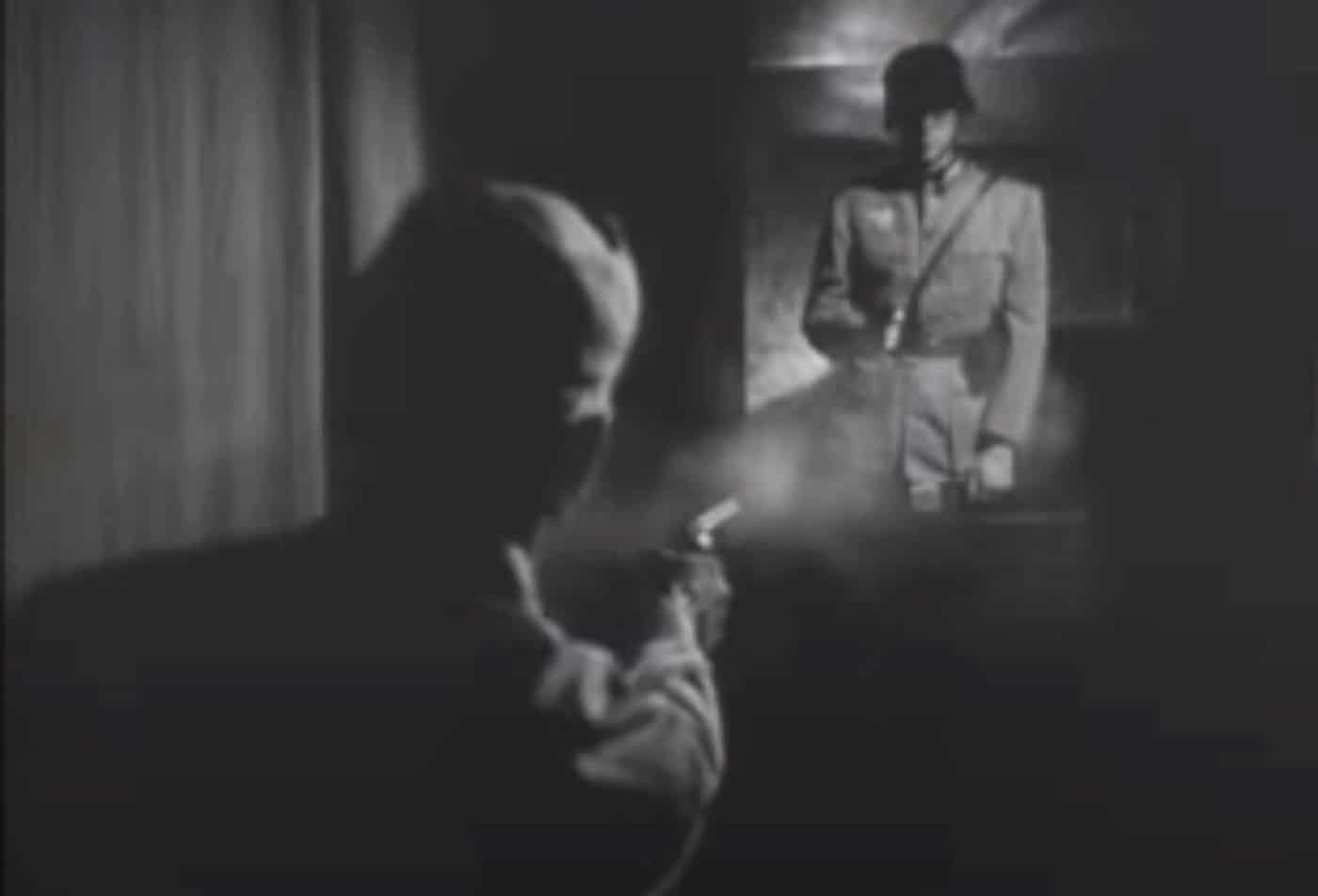
William Fairbairn, one of the co-authors of the book, appeared in OSS training videos created by film legend John Ford. Image: NARA
This is a time capsule that shows the beginnings of the tactics and techniques we still use today.
It is said that no man bore more scars on his hands, arms and legs than Capt.
Fairbairn due to his time on the police force.
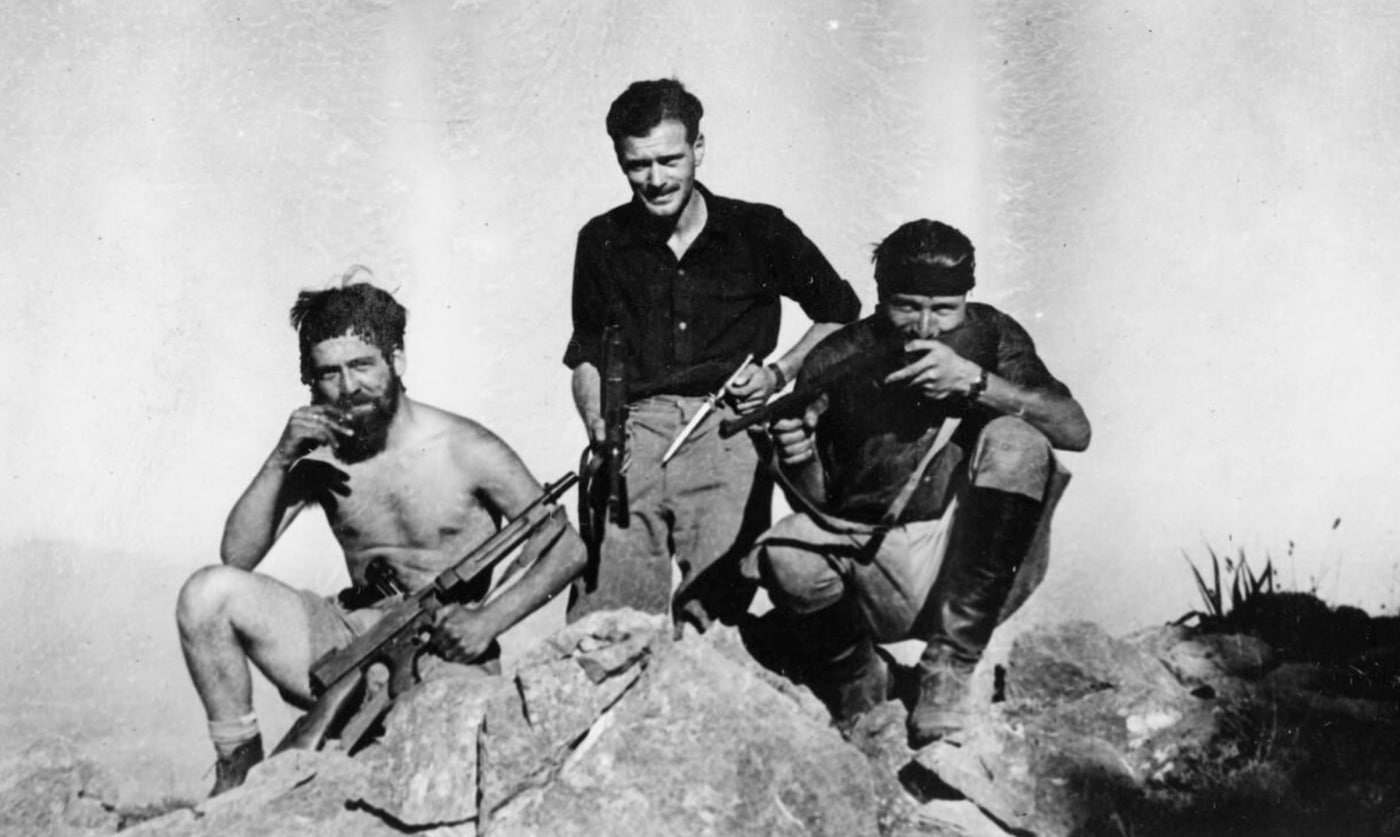
Two British operatives and a partisan pose for the camera in the White Mountains of Crete, June 1944. Image: Imperial War Museum/© IWM HU 66047
The book is interesting and written in a unique style with a very civilized tone.
Hemingway would hate all the adjectives and flowy talk, but I found that it has its charms.
Early in the book, Capt.
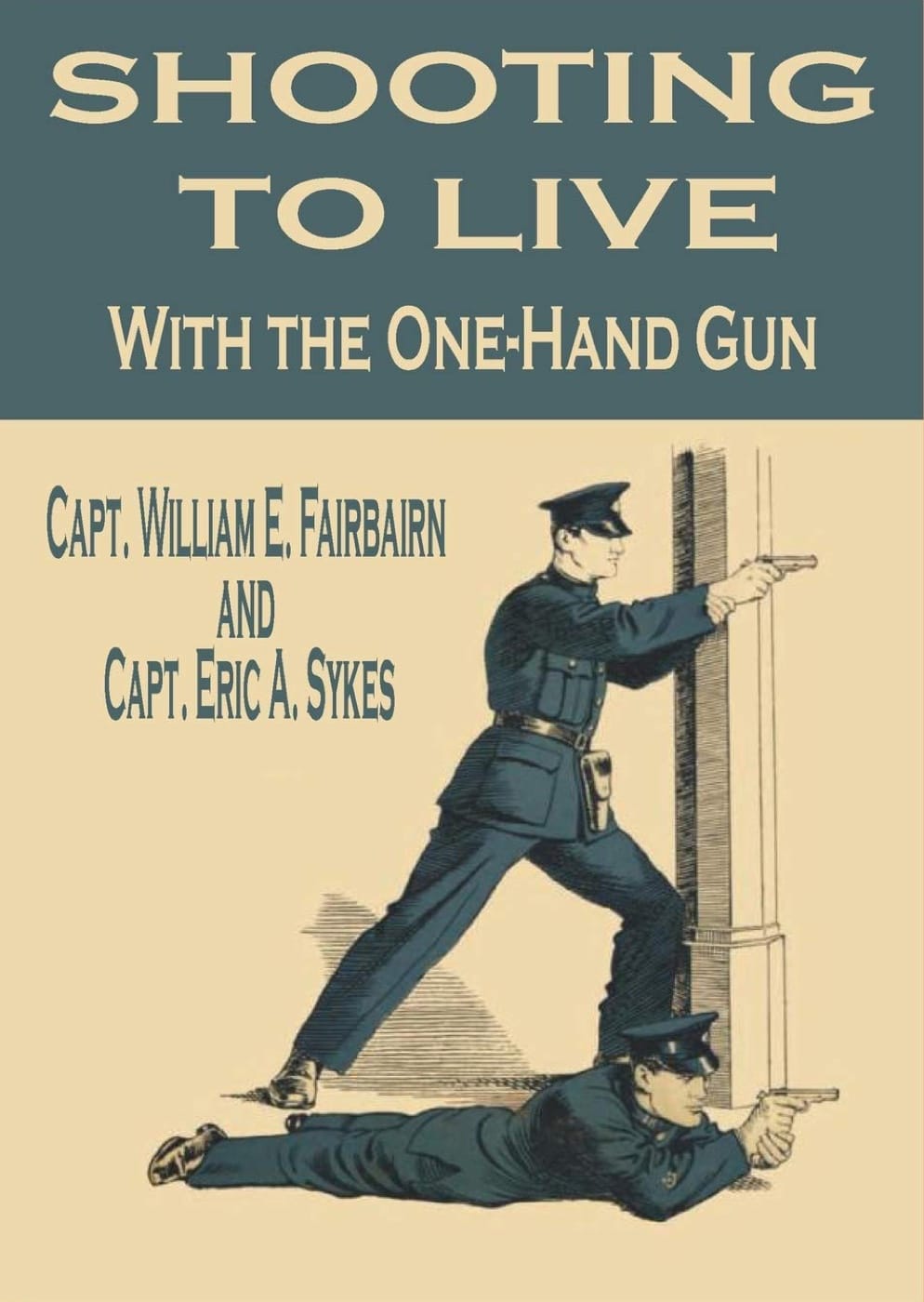
The “Shooting to Live” book greatly influenced the training of armed citizens, soldiers and police officers. How well has it held up over time?
Fairbairn discuss realistic training methods and talk about the limitations of square range traditional marksmanship.
The book covers choosing a handgun.
Contrary to what some might guess, they even suggest an automatic over a revolver.
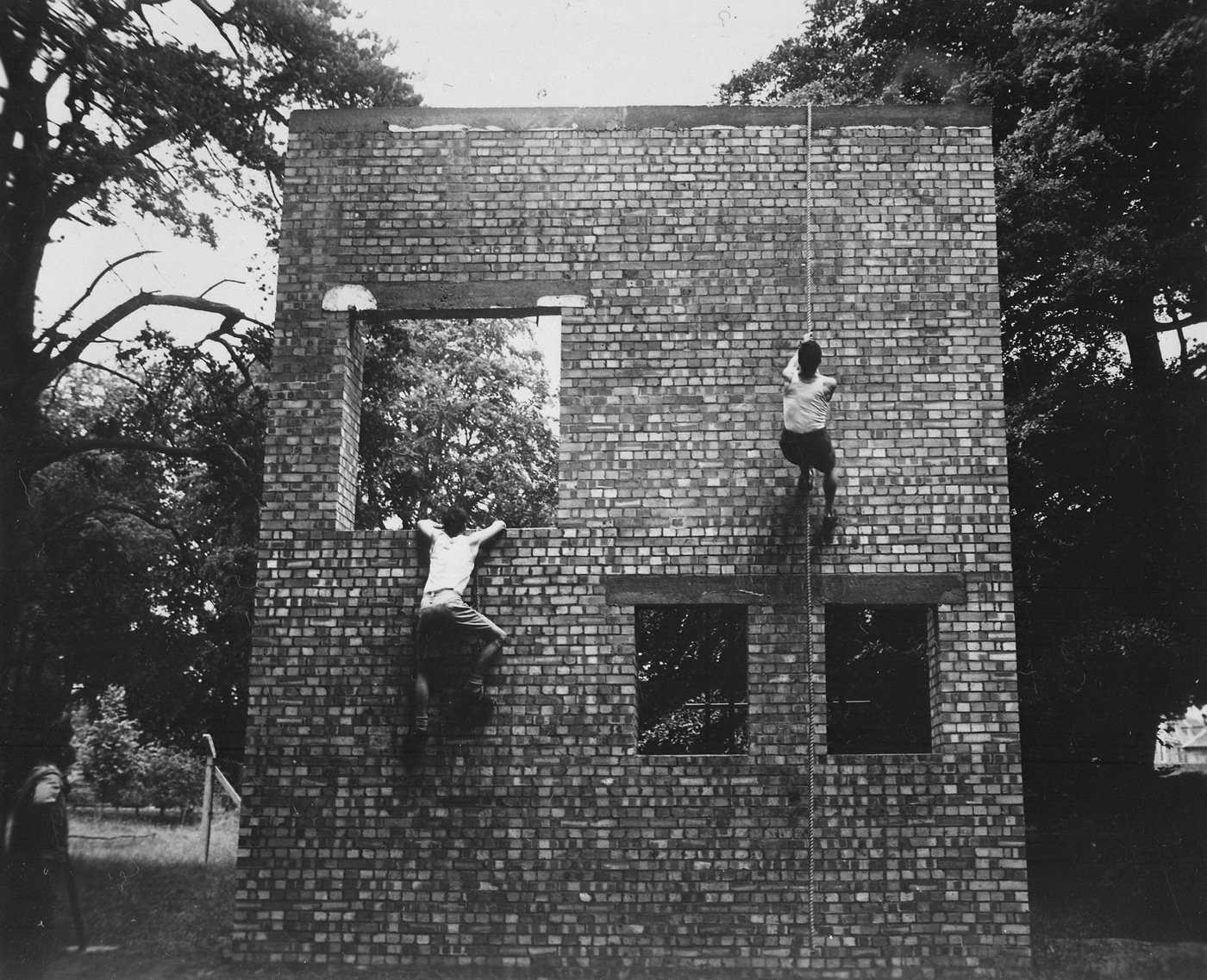
British, French and American special operations soldiers train for Operation Jedburgh at Milton Hall, England, circa 1944. Image: NARA
It lists simple functions the students should do, loading and unloading, charging the pistol, etc.
Buried in this chapter are numerous quarter hip positions.
I found the advanced training chapter is somewhat messy.
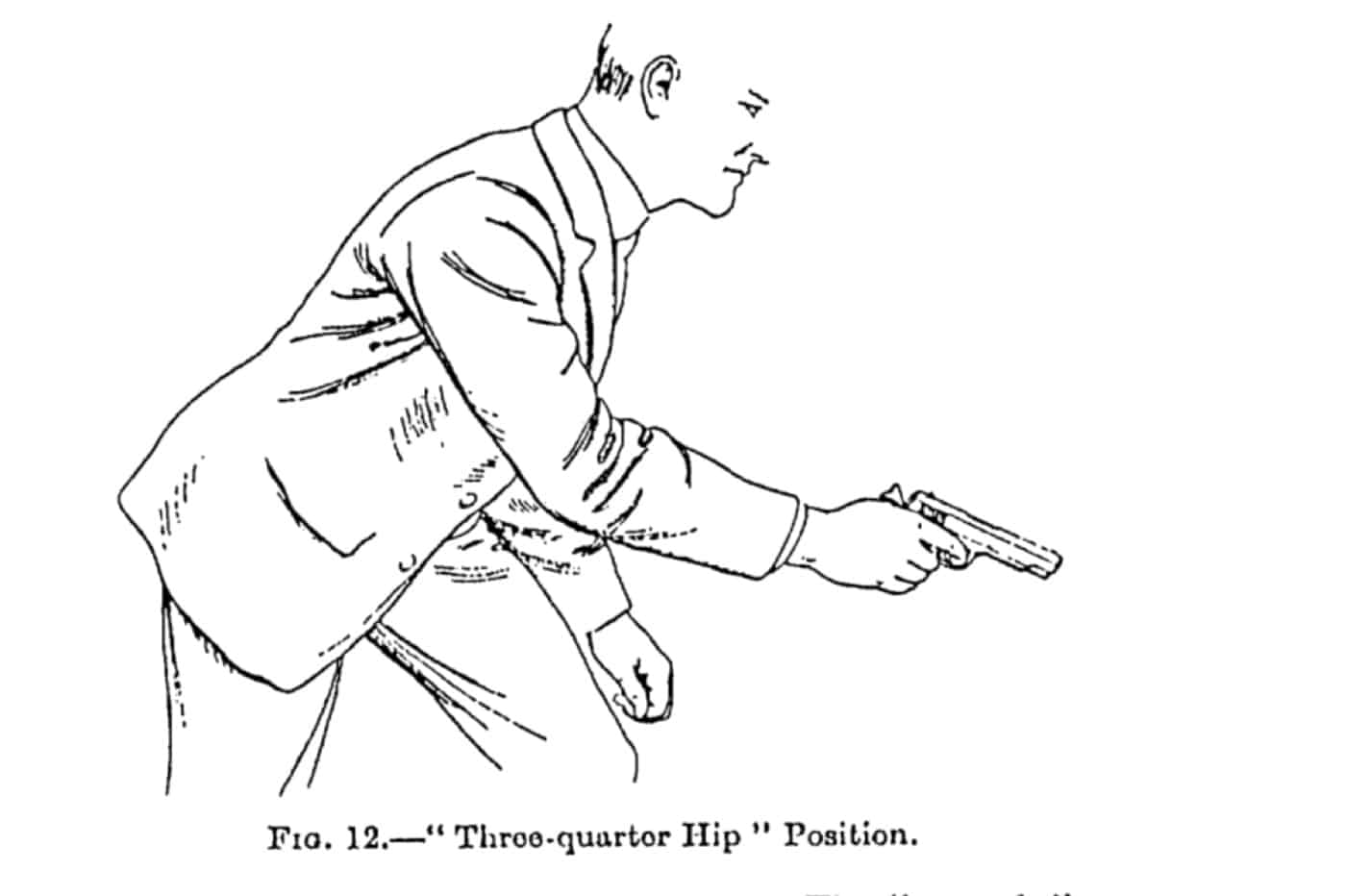
This illustration from Shooting to Live demonstrates the three-quarter hip position as described by Fairbairn and Sykes.
Its good advice but seems poorly organized.
They describe it as a semi-crouching position where the shooter fires from a somewhat close retention position.
They felt the position was ideal for use in the tight city streets of Shanghai.
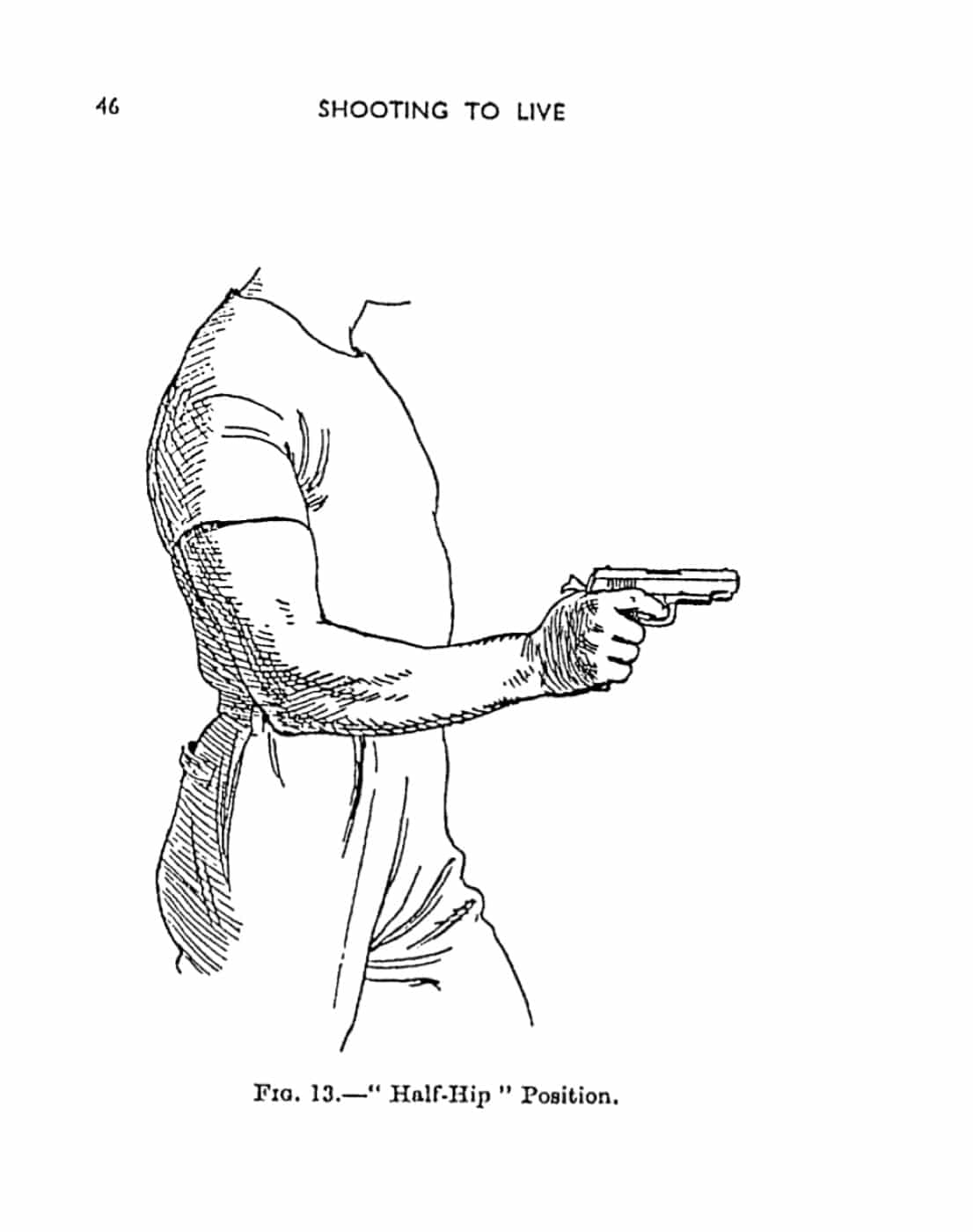
This illustration shows the half-hip position taught by Sykes and Fairbairn in their book Shooting to Live.
The close hip is also what we call close retention these days.
Back then, it was extremely close quarters and designed to be used as the gun is drawn.
Its listed as a one-yard technique.
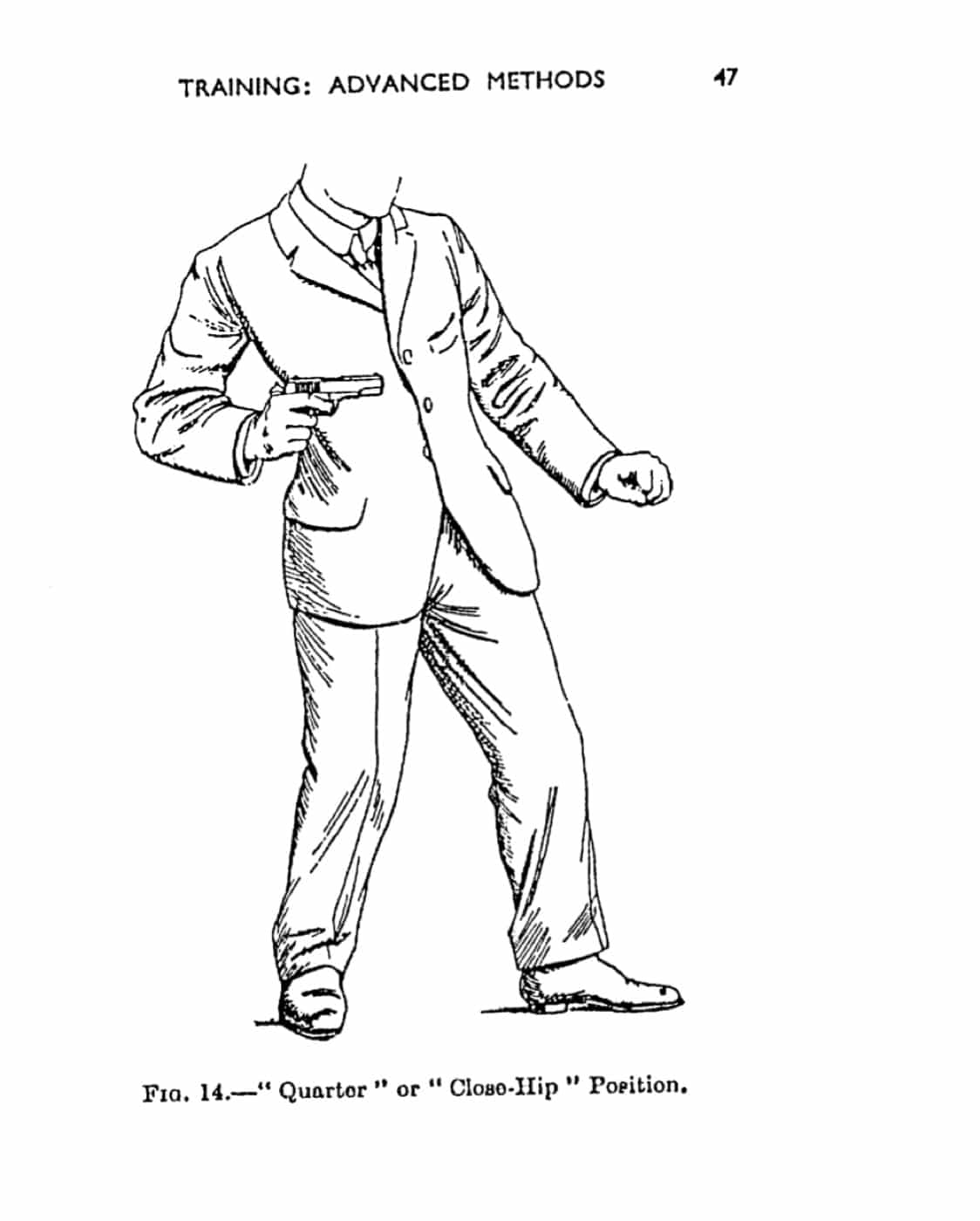
The quarter position, also known as the close hip position, offers the benefit of improving retention when in close proximity to an attacker.
The book advised to use a two-handed technique when targets are more than ten yards away.
One two-handed technique demonstrated is the modern thumbs-forward grip frequently taught today.
We also see shooting around cover and the prone position.
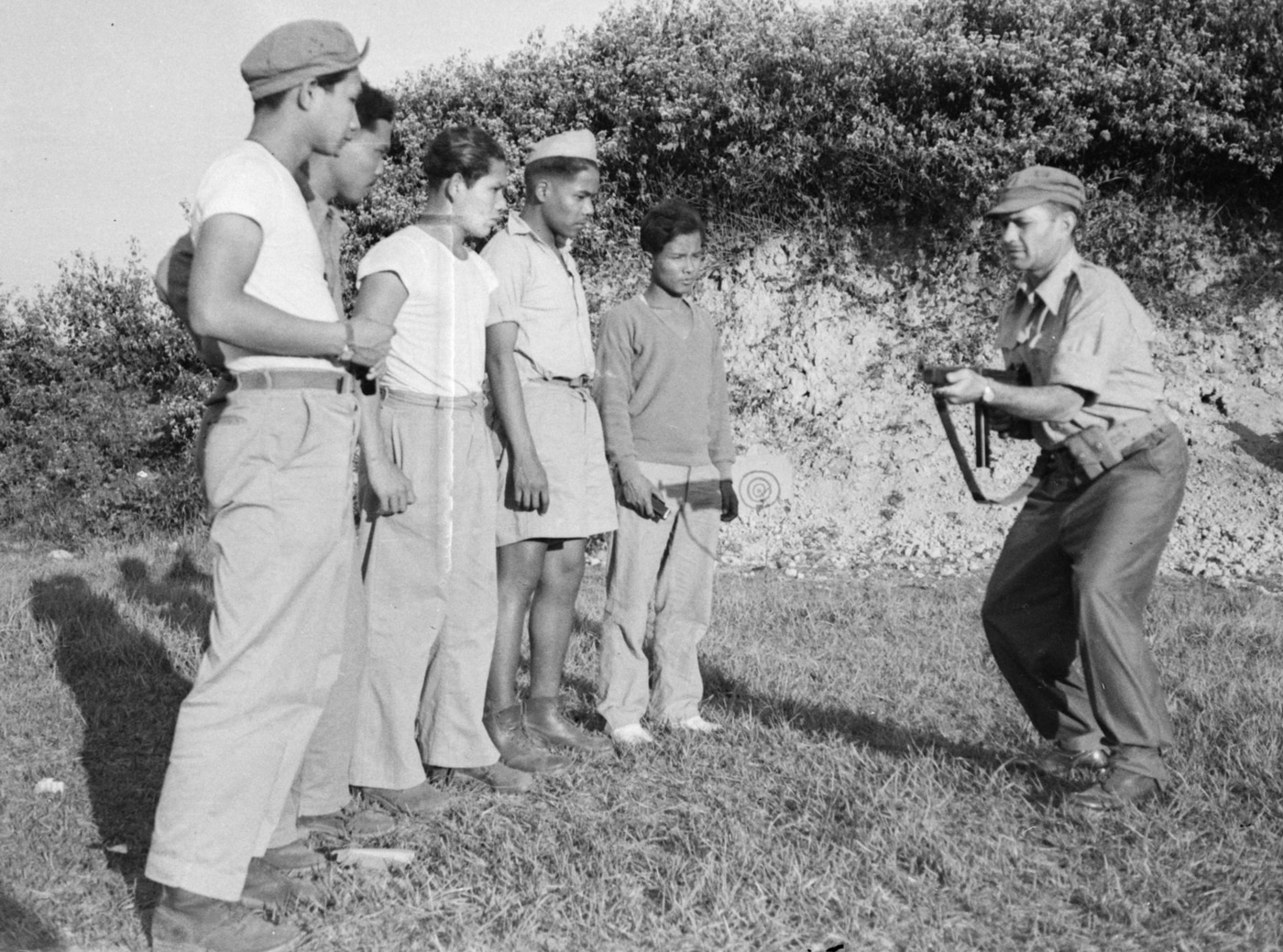
An OSS officer trains Burmese volunteers how to use a crouching position when firing a submachine gun. Image: NARA
On top of that, they talk about ammunition longevity when being carried and swapped between officers.
Its interesting on a historical note but not much use to civilians seeking just shooting techniques.
The same goes for the next chapter on building a range.
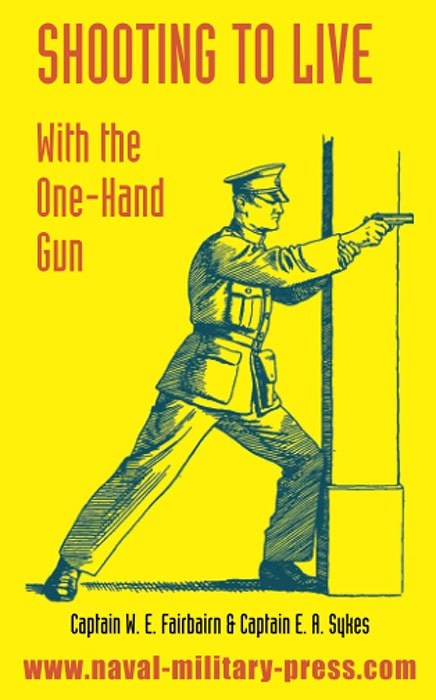
The book itself is interesting, and the illustrations are informative.
Without a doubt, the authors were not professional writers.
The book often feels disorganized, but the information remains valid.
From a historical perspective, the book is a fascinating look at firearms training from years long gone.
For a novice shooter, there is a bit more meat there.
Go to forum thread




